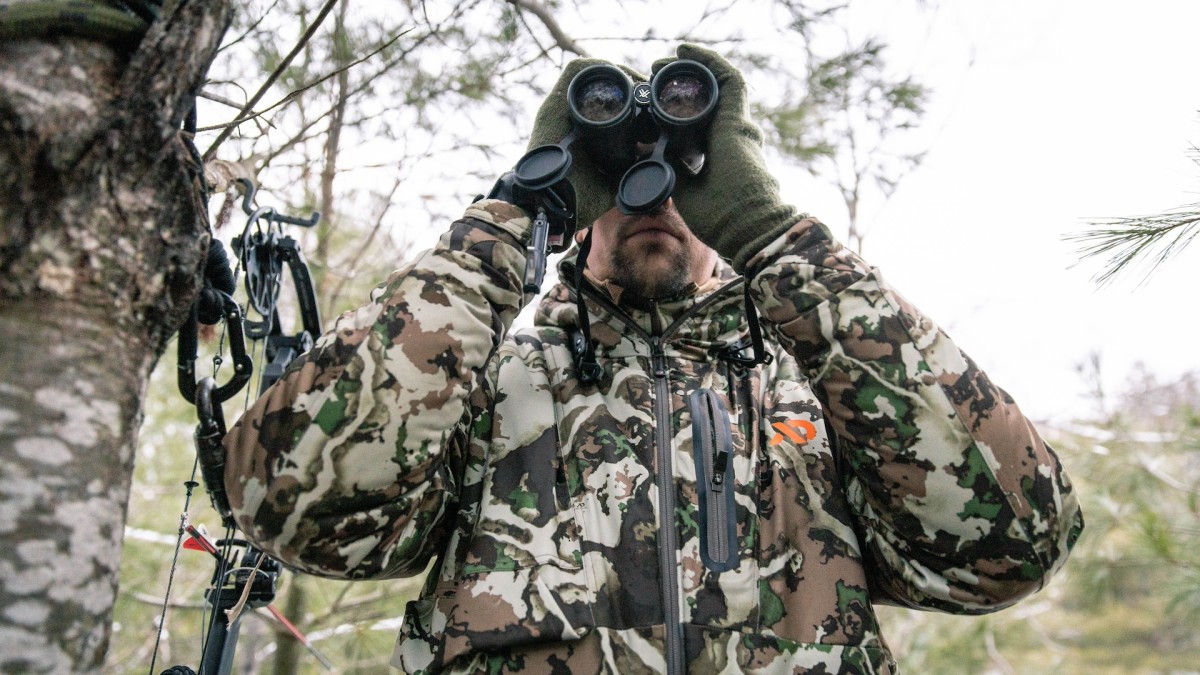
Too much hunting media preaches a conservative approach to whitetail hunting that just doesn’t work for most hunters. This message has largely dominated the conversation around hunting mature whitetails. Minimize pressure, hunt the fringes, wait for the stars to align—the same jargon that’s been recycled every hunting season and convinced hunters to hold out for bigger bucks that just aren’t coming.
It’s a top-down message that says, “If you work hard enough and save all your pennies, you can be a millionaire just like me,” without telling you about the trust fund or that their dad owns the company. I’m not against these types of hunting situations or hunters. I have several friends who hunt massive, privately managed properties with plenty of Booners to boot. However, the same rules just don’t apply to the guy who works six days a week and squeezes in with the rest of the crowd on public land.
If you’re a weekend warrior and primarily a public land hunter, you’ll spend your season waiting for the right conditions or making excuses to hunt another B-spot. I’m not suggesting that you throw all caution to the wind, dive in, and disregard your access or the wind direction. But, instead of conservative tactics, you should be thinking of a calculated approach.
A calculated approach might be aggressive, but it’s not reckless. While you’ll need to consider the obvious (deer bedding and travel, access, wind direction, etc.), you should also consider the amount of time you actually have to hunt each season. Like the actual number. Count up your weekends, vacation days, PTO (if you have it), and write that number down. Depending on your career and vacation scenario, you might think you have plenty of days to hunt, but here are a few factors to consider before saving your best spots for the perfect conditions.
How Many Days Can You Actually Hunt?
We like to think of hunting seasons in terms of months, but we should be thinking about them in terms of days. Just for fun, let’s run through a hypothetical scenario. Let’s say you live in a state with a deer season that runs from October 1 to January 31 and you only have Saturdays and Sundays to hunt, no vacation because you spent it with your family at the beach, but you have four holidays. That’s a total of 36 days. Not so bad, right? Well, that number is misleading.
It represents the potential number of days you could hunt if everything goes right. But, if you’re married and have kids, you still have to consider sick days, birthdays, family obligations, holidays, and the long list of unexpected things life will throw at you, not to mention the “busted” sits where other two and four-legged predators ruin your hunt. You’ll still have to subtract those factors from your total number of days.
As much as I’m against it, we’ll take a conservative approach with these calculations. Say you have two hunts where squirrel hunters walk through your setup, you and your significant other get the flu, which costs you four hunting days, you have one child with a birthday in October, you have to travel for both Thanksgiving and Christmas, which requires six more hunting days, your truck breaks down on a Friday just before a cold front, and your significant other needs a weekend of quality time, taking two more days. Finally, the forecast calls for severe thunderstorms one weekend in November. That’s 19 days. Subtract that from your total of 36, and you’re left with 17. That’s less than half of the days you originally anticipated. Still want to spend the month of October hunting the fringes? Yeah, me either.
Murphy’s Law
I used to get frustrated every time something would interfere with my hunting plans, especially if I used vacation time. Now, I’m more surprised when it doesn’t. A couple of years ago, I took off a week to hunt the rut. Not fifteen minutes into my first sit, my wife texted and said she wasn’t feeling too hot. That day was unseasonably warm, but I knew a cold front would be pushing through the next evening, so I offered to come home and help out with our daughter so my wife could rest. She insisted against it, but I decided to come home anyway because better conditions were on the horizon anyway.
Fast forward twenty-four hours and one positive COVID test later, and that was a wrap for my rutcation. Sure, one day might not have made a difference, but there went a total of five during peak rutting action. I had to resume work the next week, only to be derailed by heavy showers the next Saturday. Just like that, two weeks passed, and it was back to trying to figure out what the deer were doing. At this point, I had two full days left in my season, with the best days behind me. I’ll let you guess how many tags I filled with those two days.
Similarly, I’ve wasted hunts by talking myself into sitting a B-spot because the conditions weren’t exactly perfect. Instead, I should have read the fresh sign and taken advantage of the time I had to hunt that day. We tell ourselves we’re being smart by playing it safe, but in reality, you take yourself out of the game, and then a month goes by before you get any type of condition to hunt your A-spot.
This isn’t a license to cut corners, get lazy, or implement other bad hunting habits, but it should make you take a hard look at how many days you’ll likely get afield next season. You don’t have to approach every sit like it’s your last, but a little more calculation and urgency won’t hurt.
Feature image via Captured Creative.







Conversation